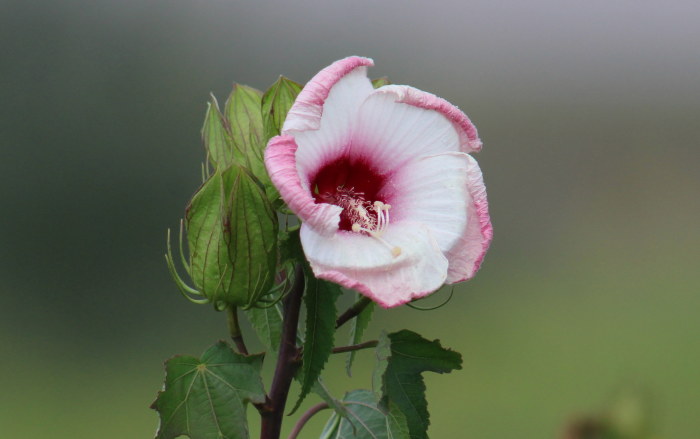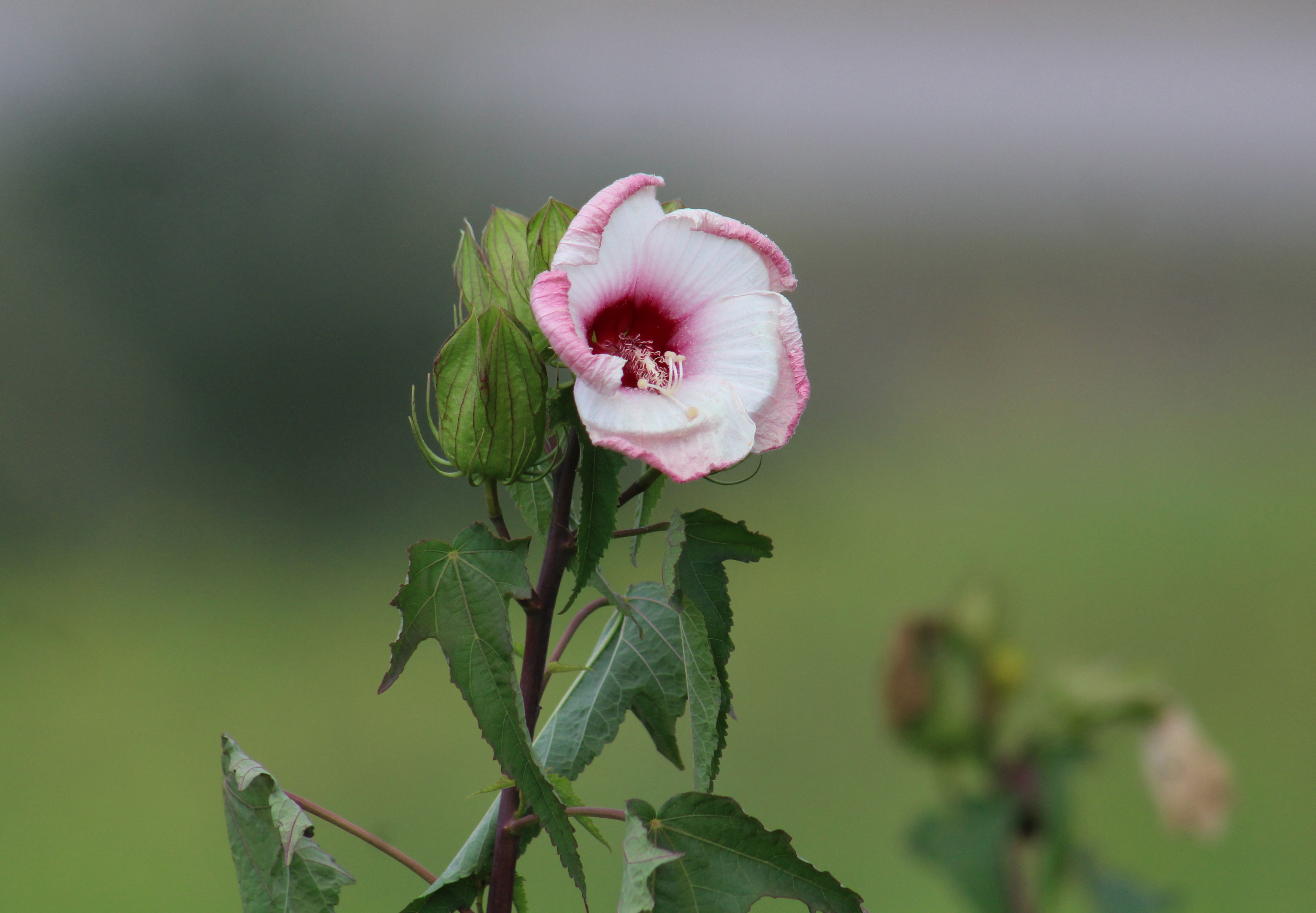Just before Halloween last year, Beth Lynch contributed a fascinating post about witch hazel, a native plant that blooms in the fall.
Since most Iowa wildflowers have gone to seed by late October, I’m reaching back to the late summer for this week’s edition. Marla Mertz took all of these photos in August while exploring prairie habitats in Wilcox Wildlife Area (Marion County).
Rose mallow (Hibiscus laevis) is native to most of the U.S. east of the Rocky Mountains. Sometimes known as halberdleaf or halberd-leaved rose mallow, it thrives in “marshes, swamps, low areas along rivers and ponds, and soggy islands in the middle of rivers or ponds.” According to the Minnesota Wildflowers site, this plant is a “Robust grower but needs some water in dry weather.” The Illinois Wildflowers site concurs: “The preference is full or partial sun, fertile soil, and wet conditions. Flowers require exposure to sunlight to open up properly. This wetland species doesn’t like to dry out.”
When she found this colony of lovely flowers, Marla wasn’t sure whether she was looking at native plants.
The Illinois Wildflowers site says lobed leaves distinguish this species from closely related rose mallows with similar flowers. Closer view of a leaf:
Closer view of a flower:
Side views:
SEPTEMBER 2019 UPDATE: Marla Mertz took some beautiful pictures of fruit forming on rose mallow plants. Minnesota Wildflowers explains,
The sepals persist and enclose a 5-sectioned capsule containing fuzzy brown seeds. When ripe, a capsule section splits down the midrib.
Sepals enclosing the capsules:
Another view of a plant with capsules:
Two photographs of capsules that have split, revealing the seeds.













1 Comment
Beautiful flowers
Wet places in southeast, east-central, and south-central Iowa are the best places to look for this plant. It’s much rarer elsewhere. I first saw it in Tama County.
PrairieFan Thu 1 Nov 4:45 PM